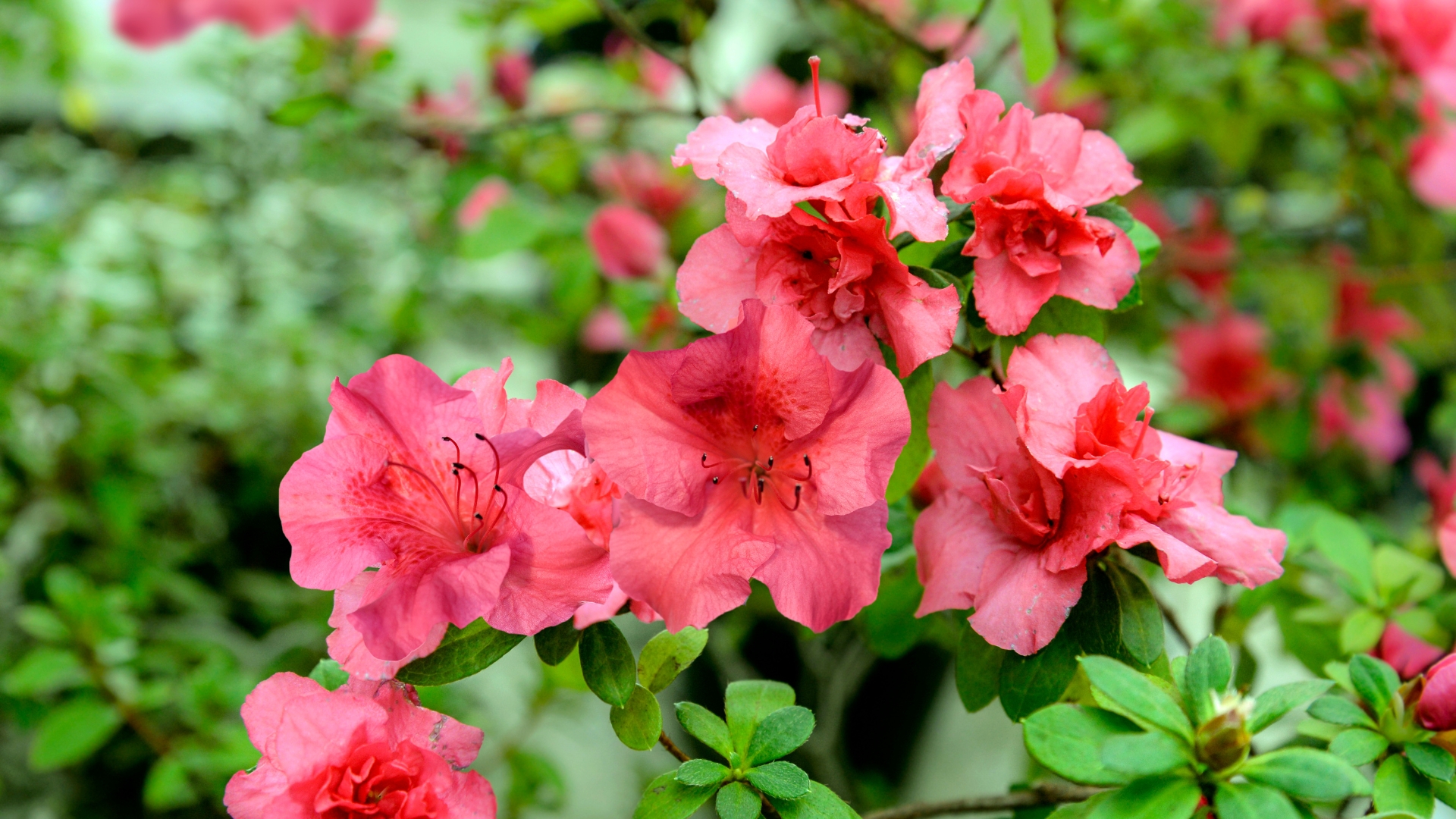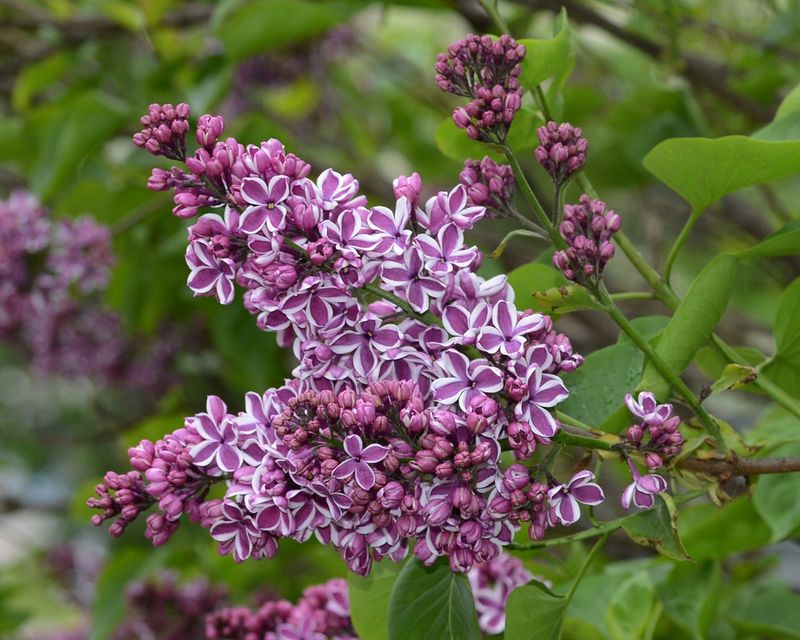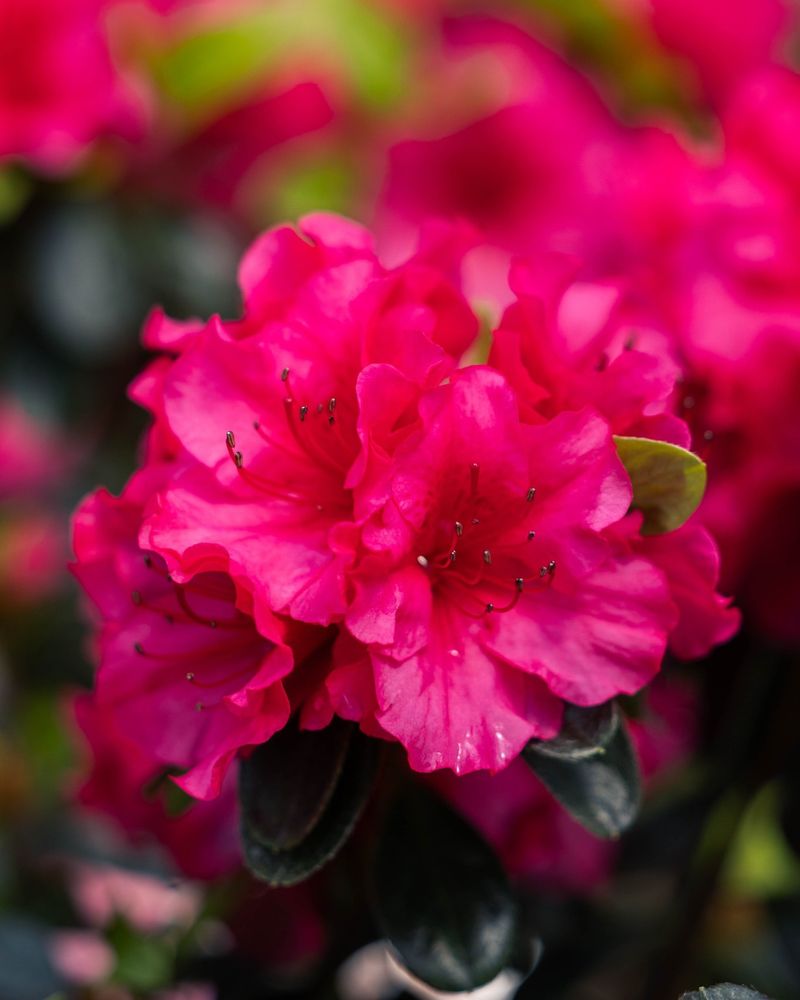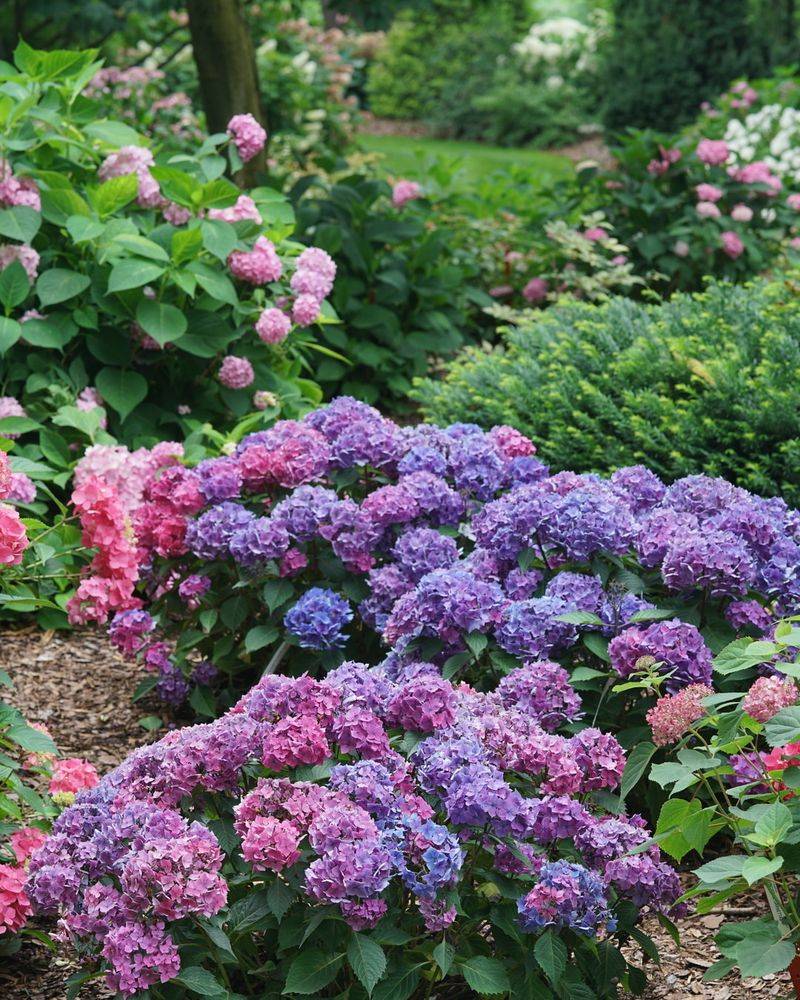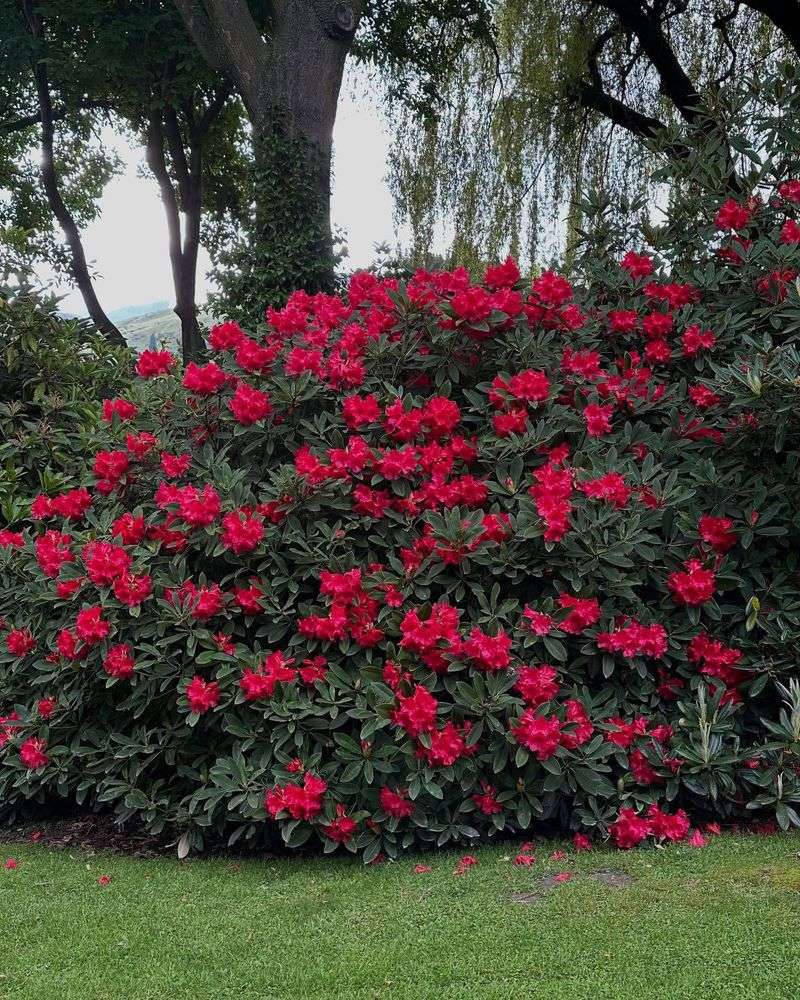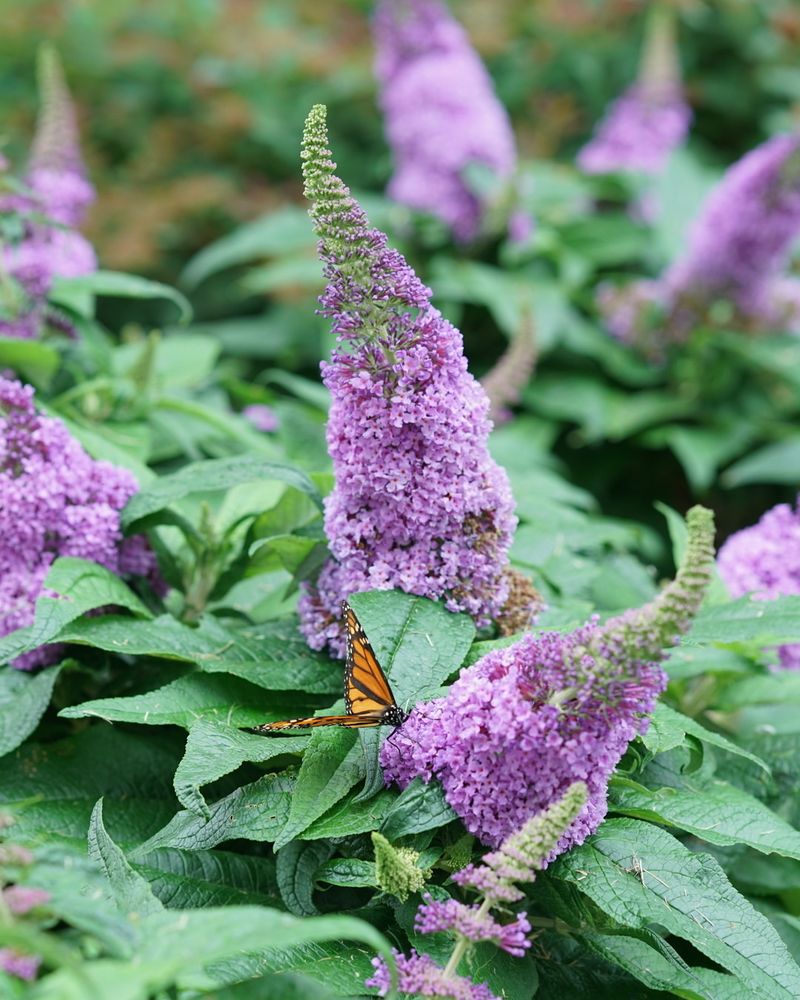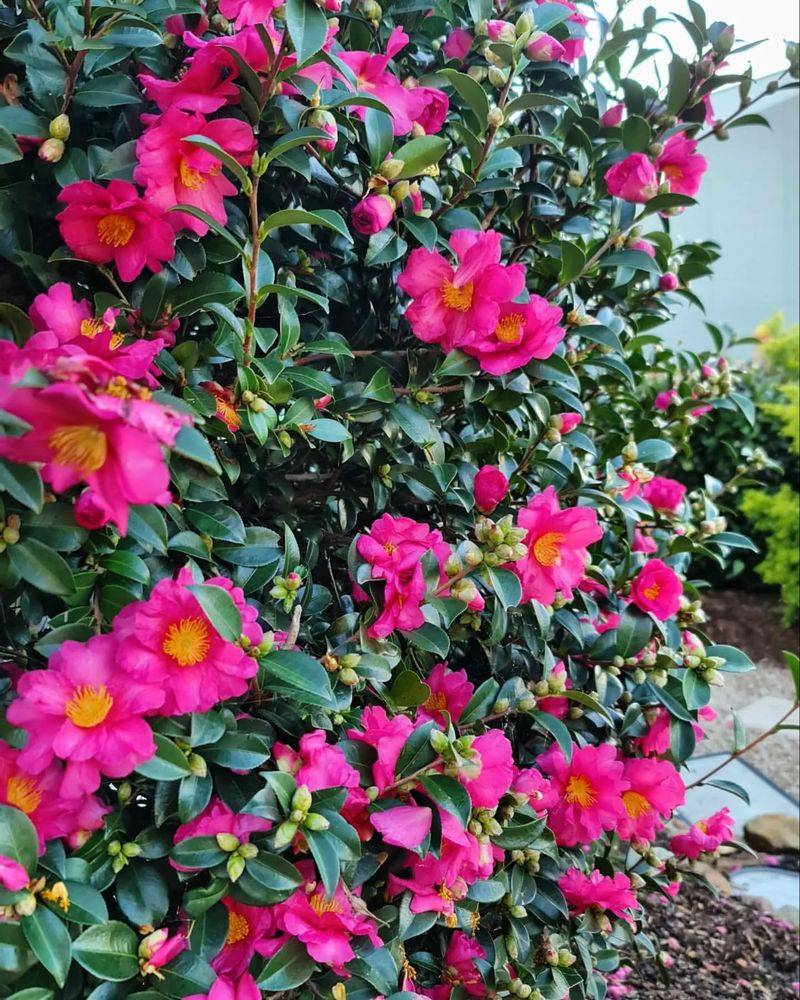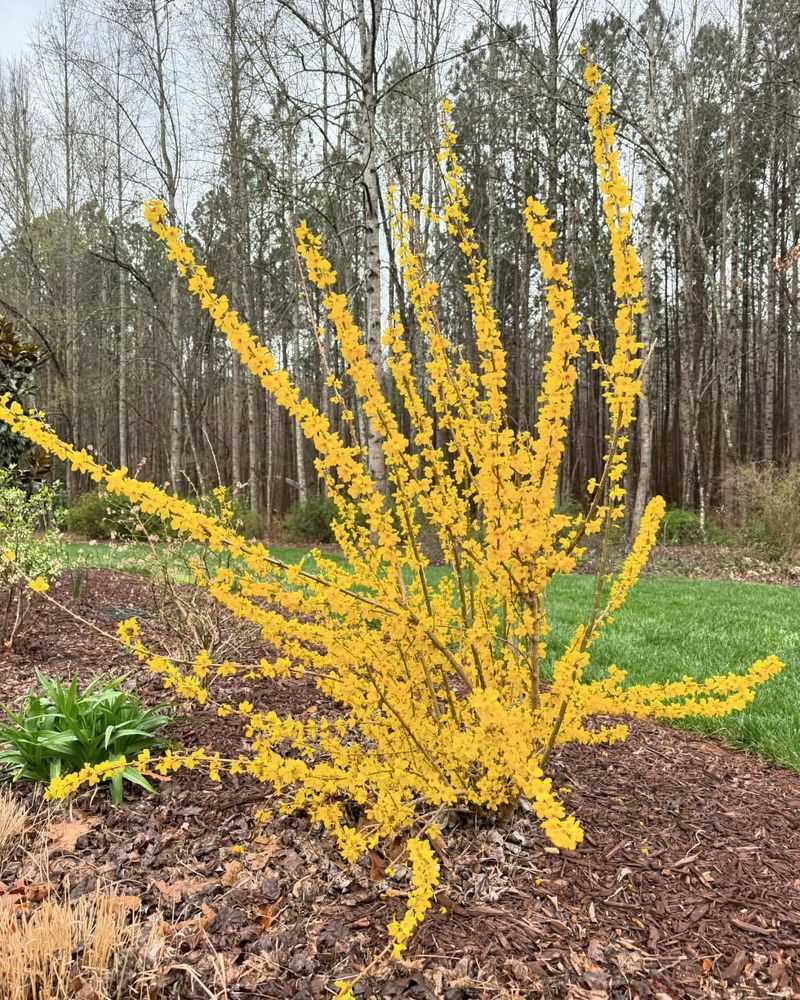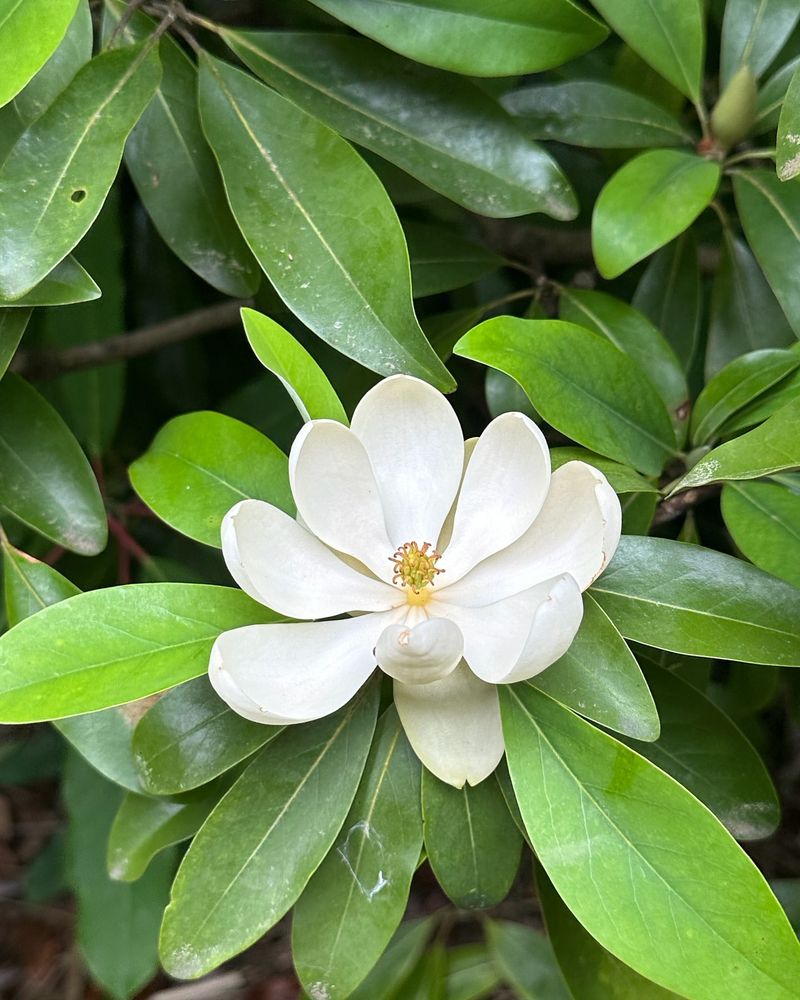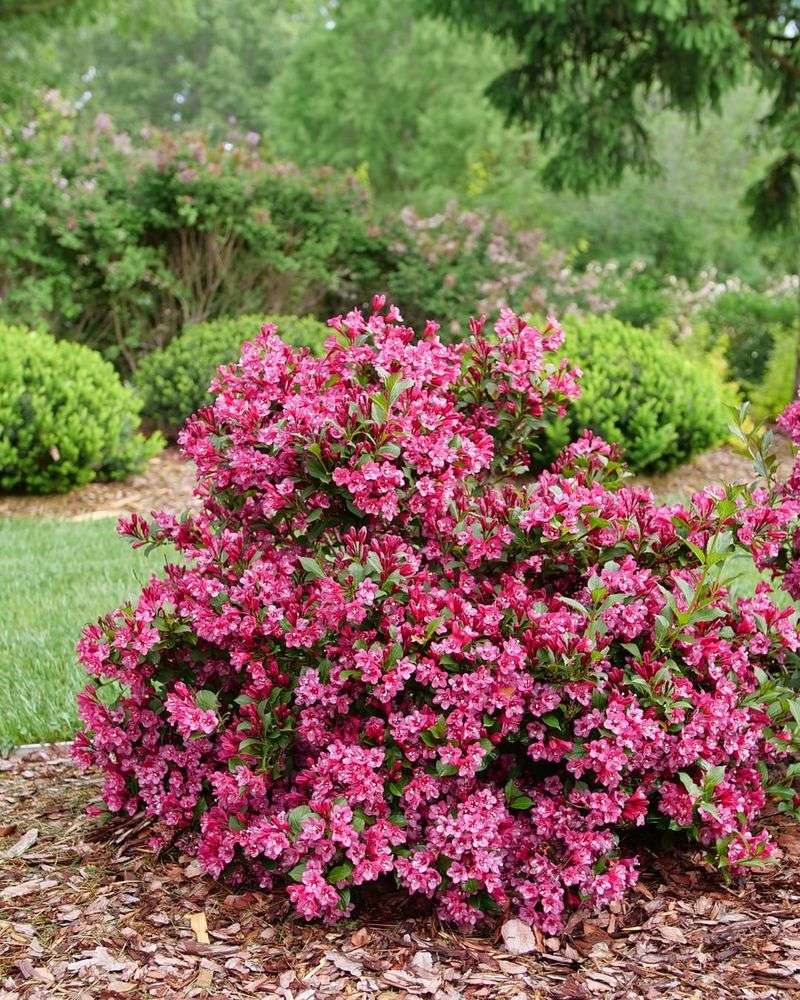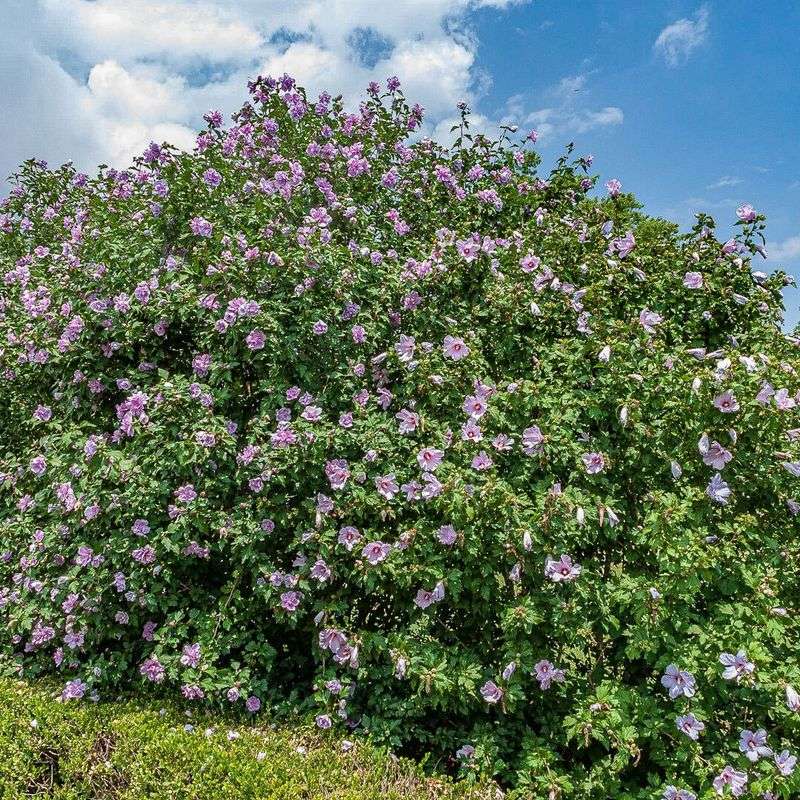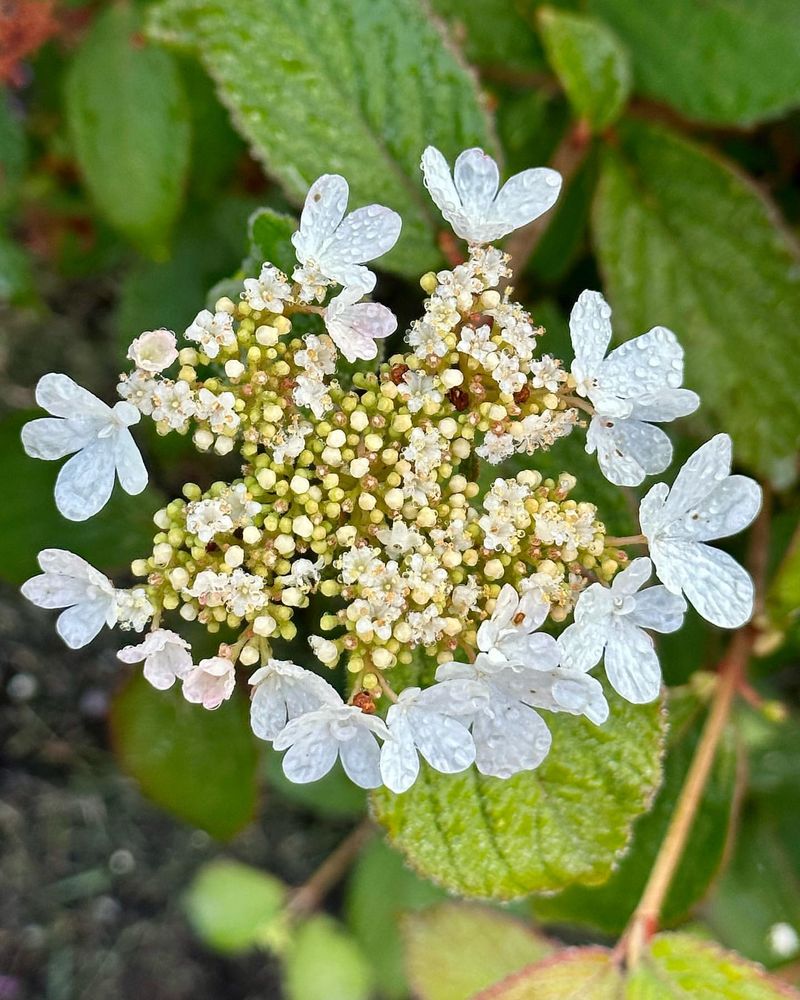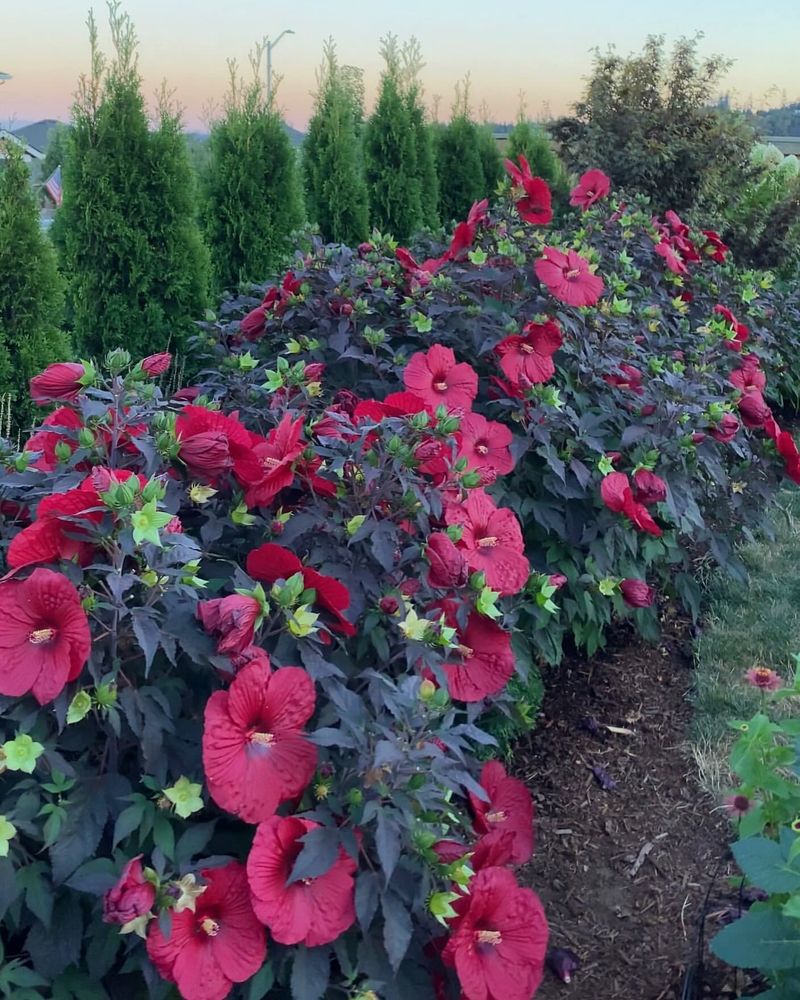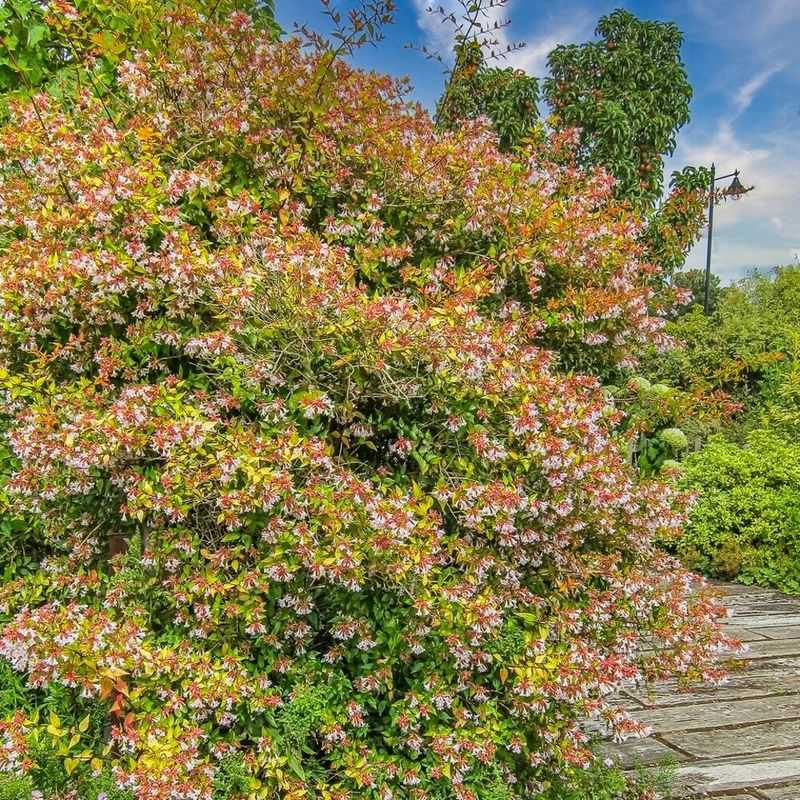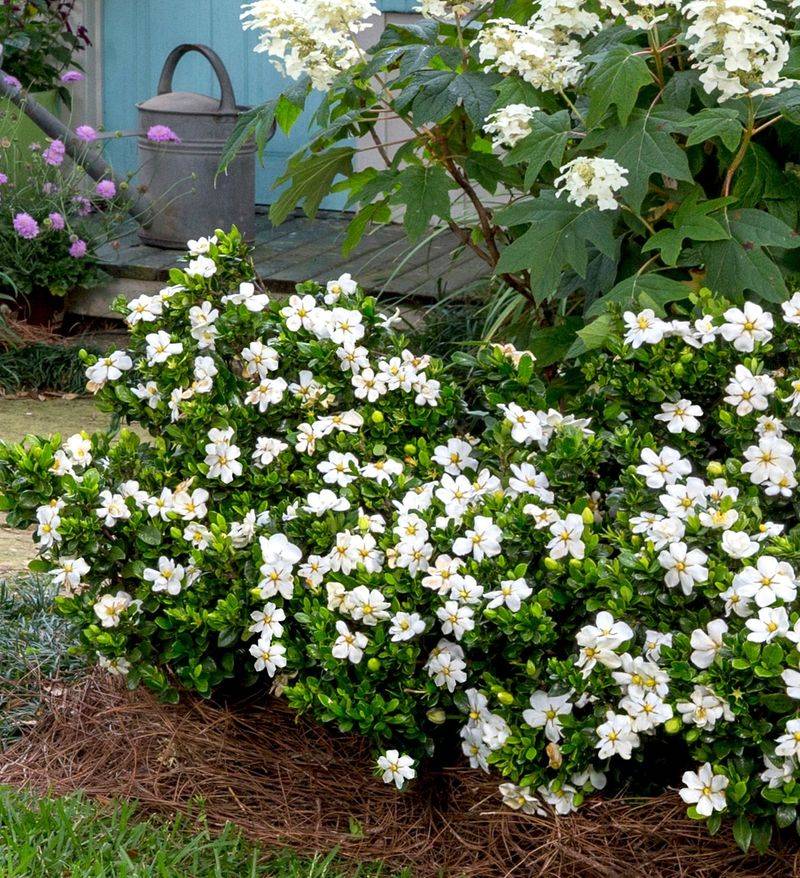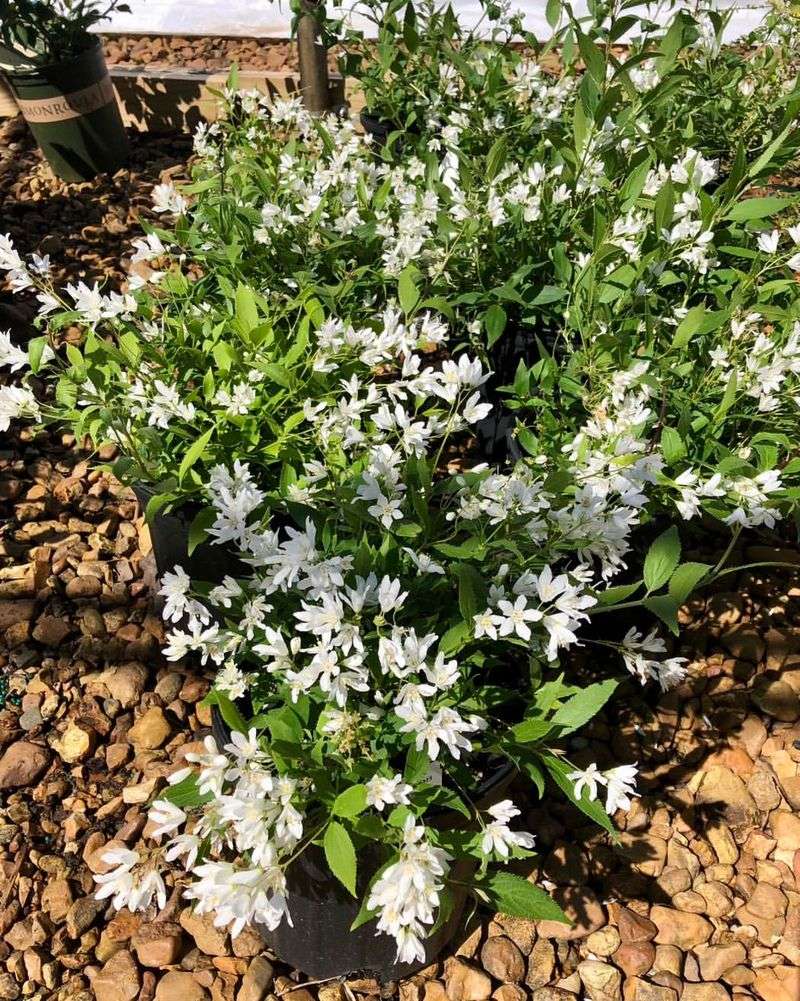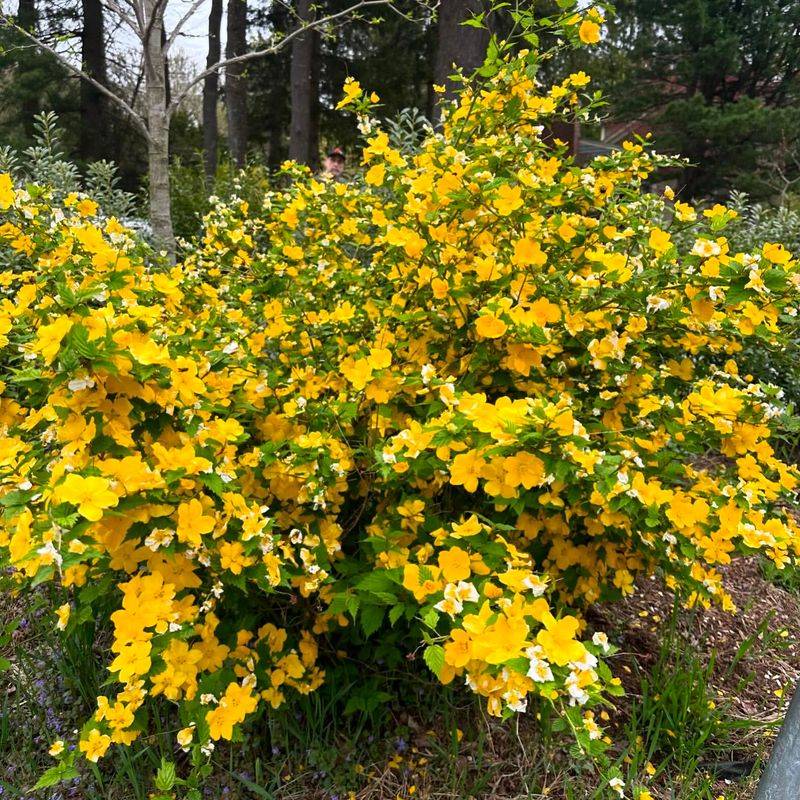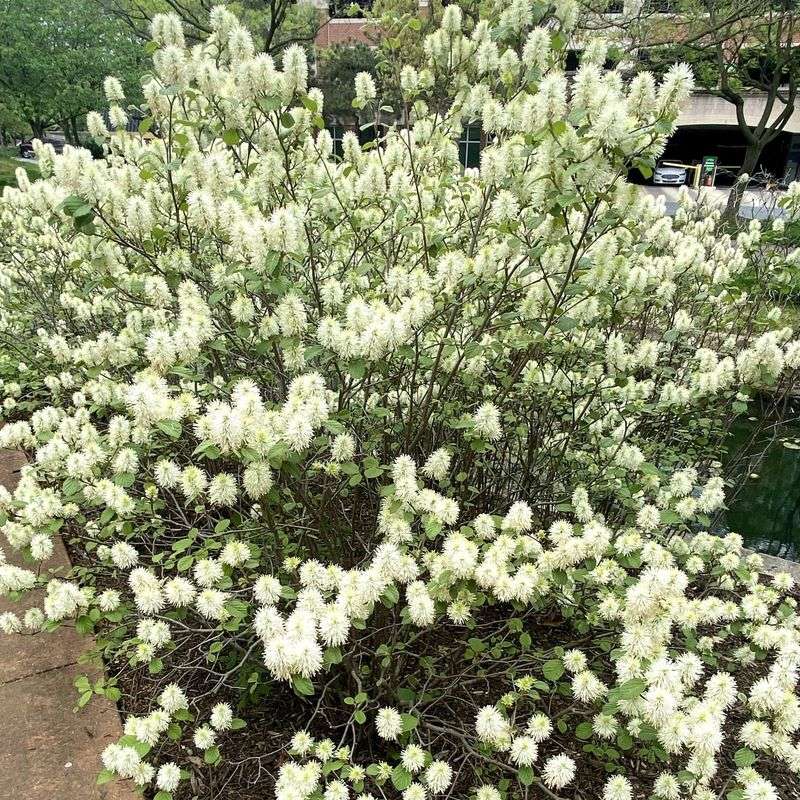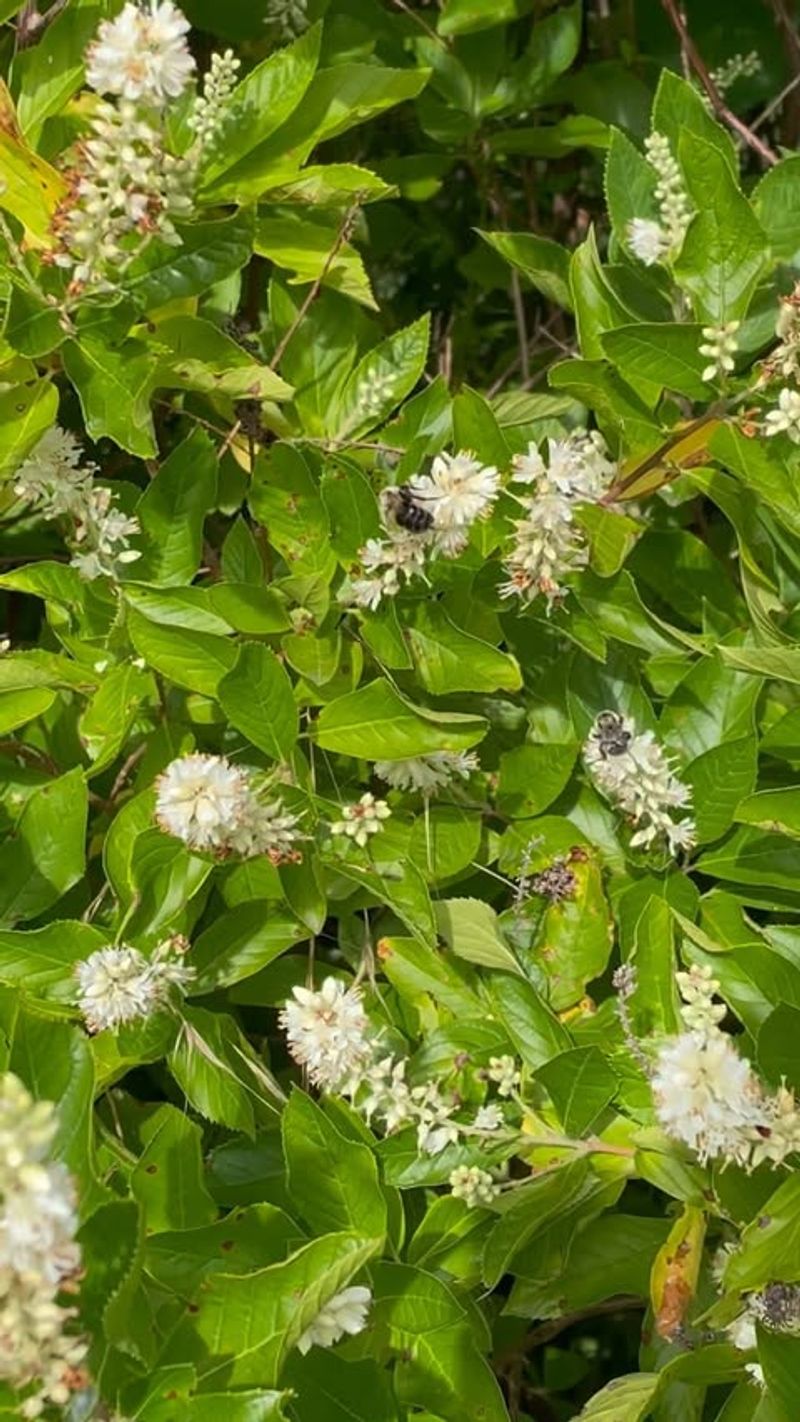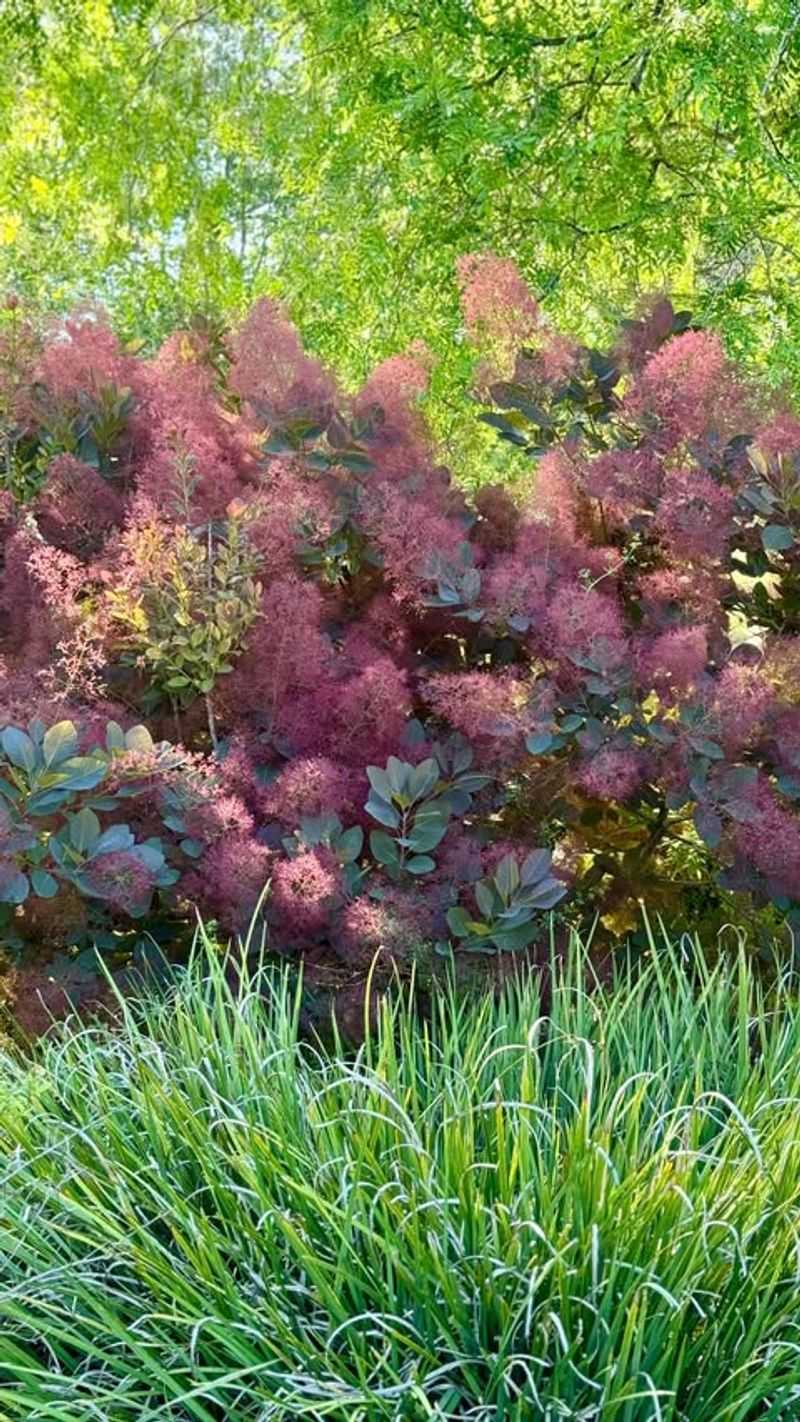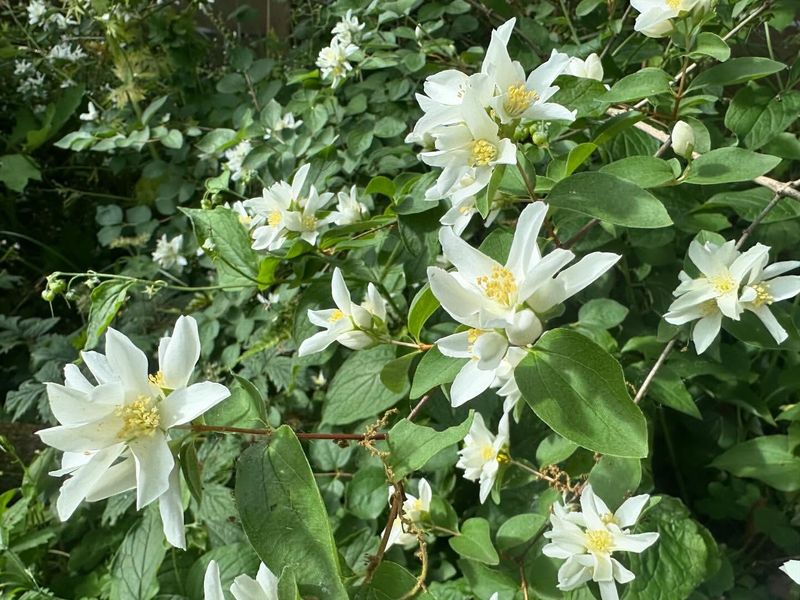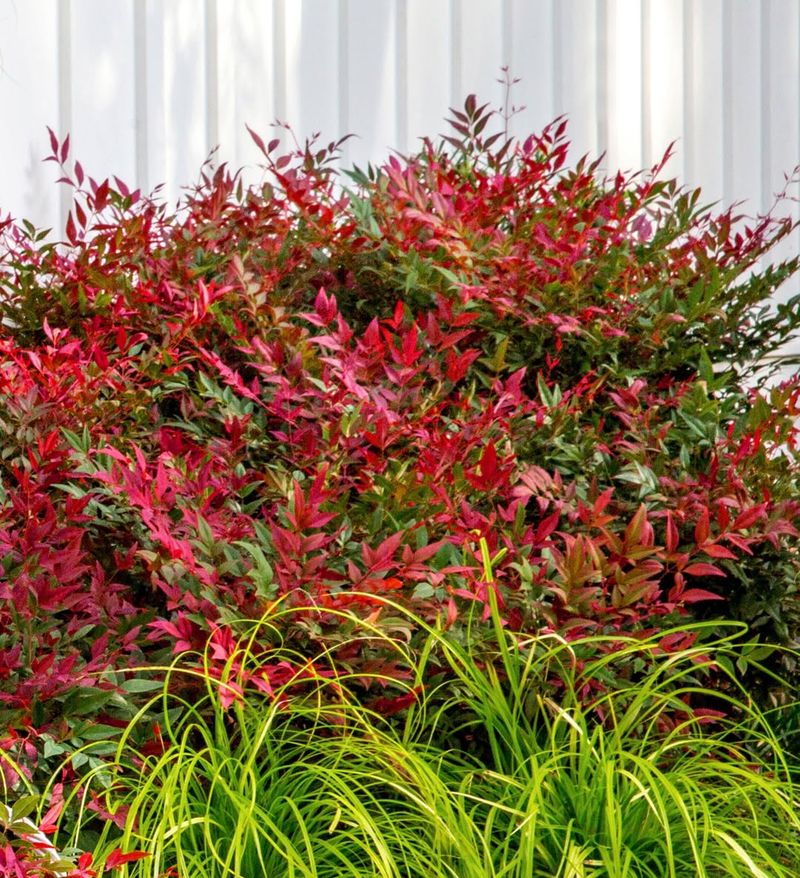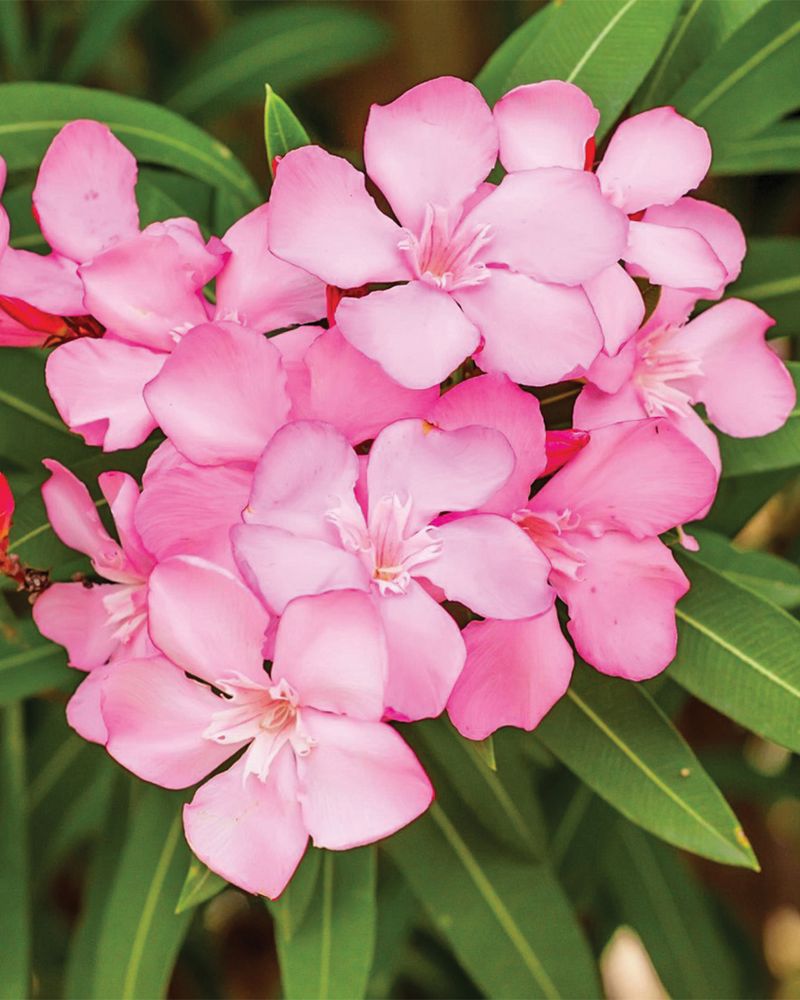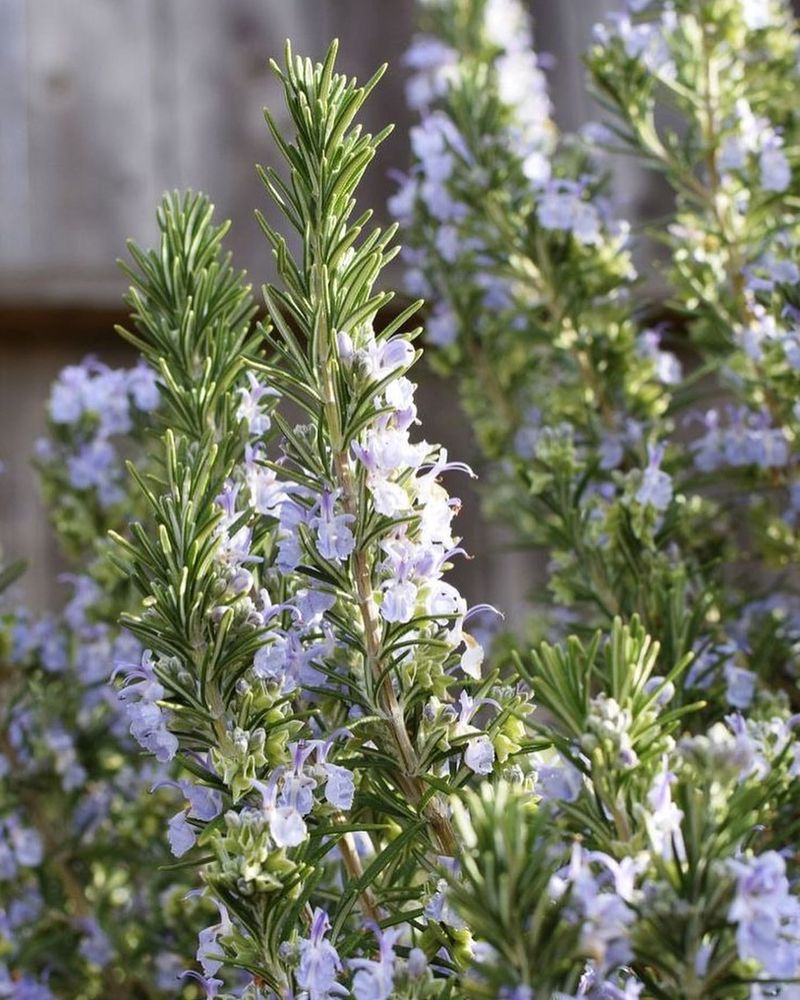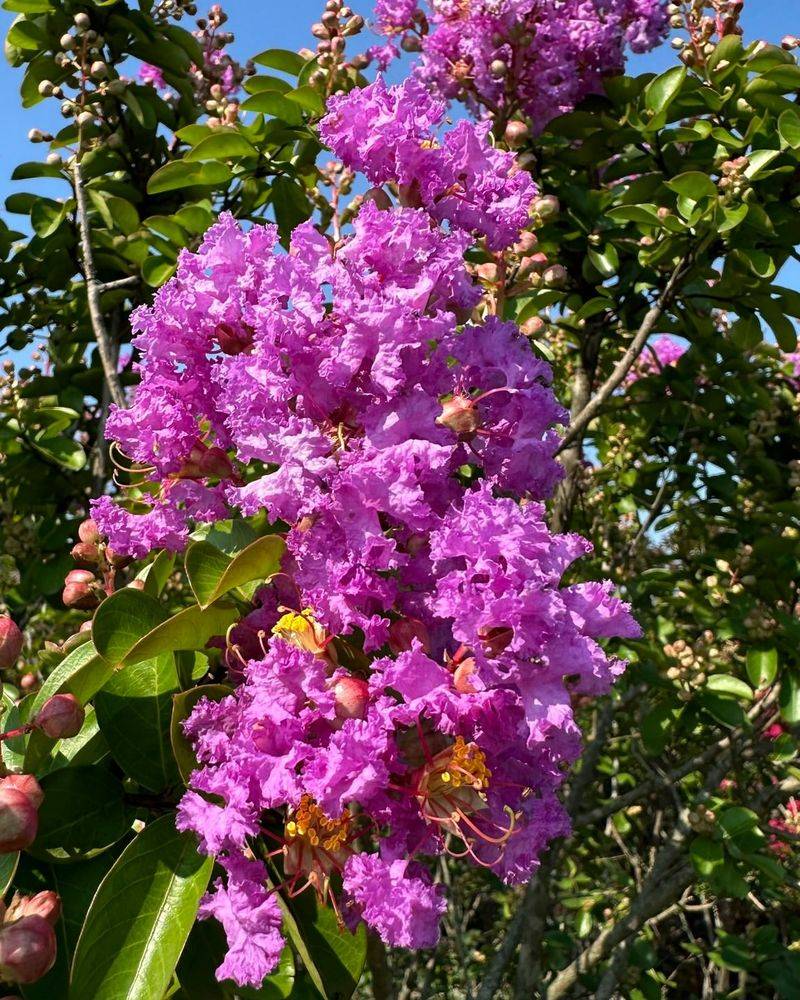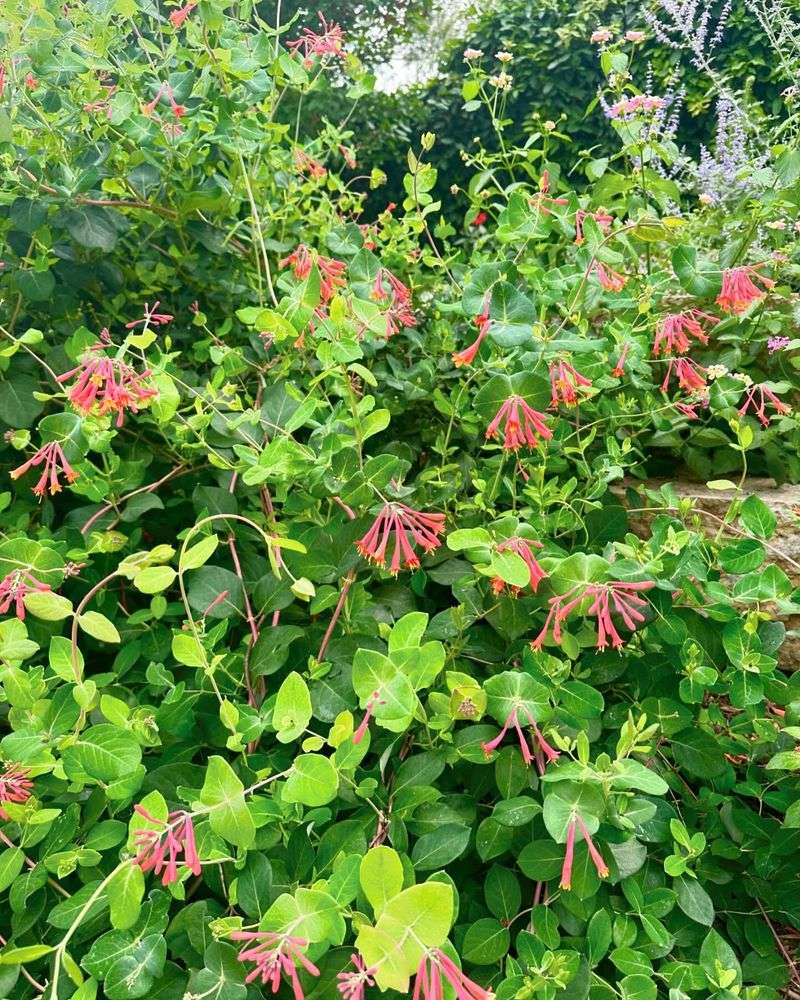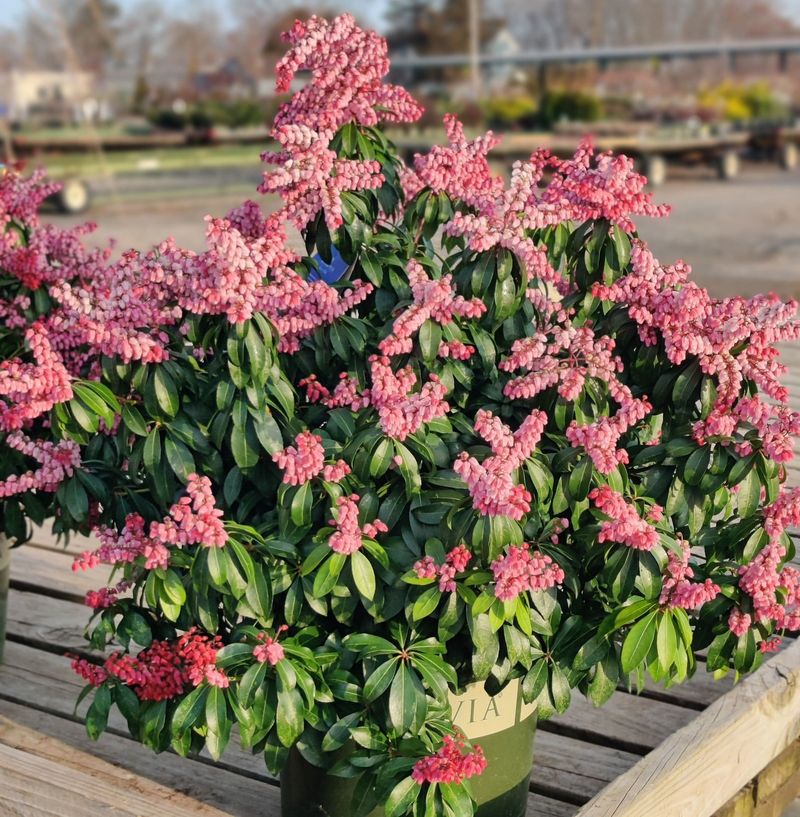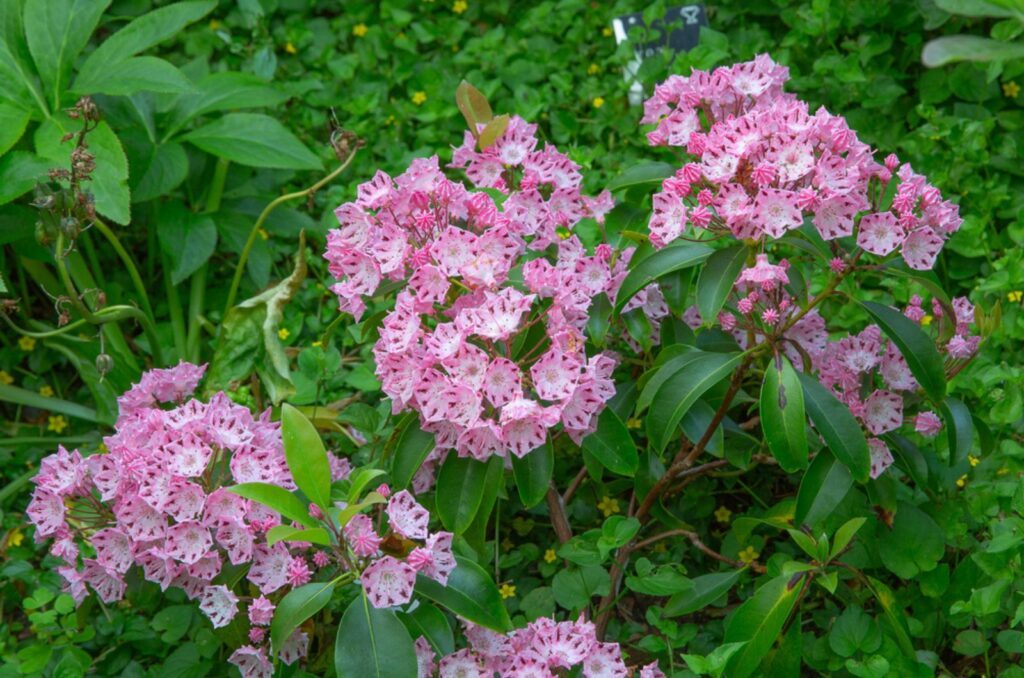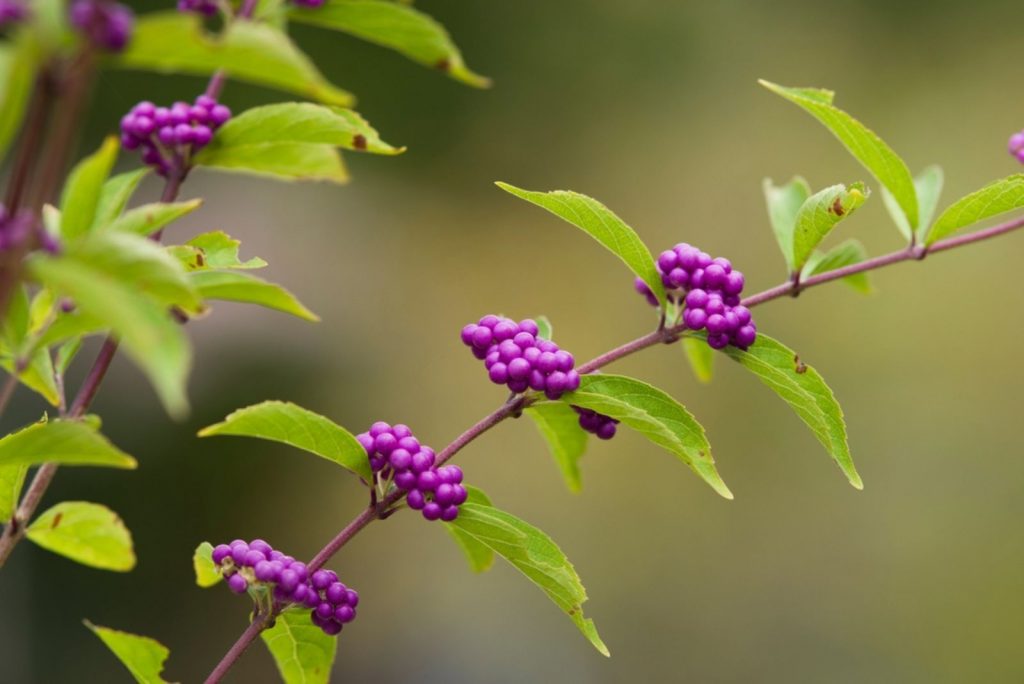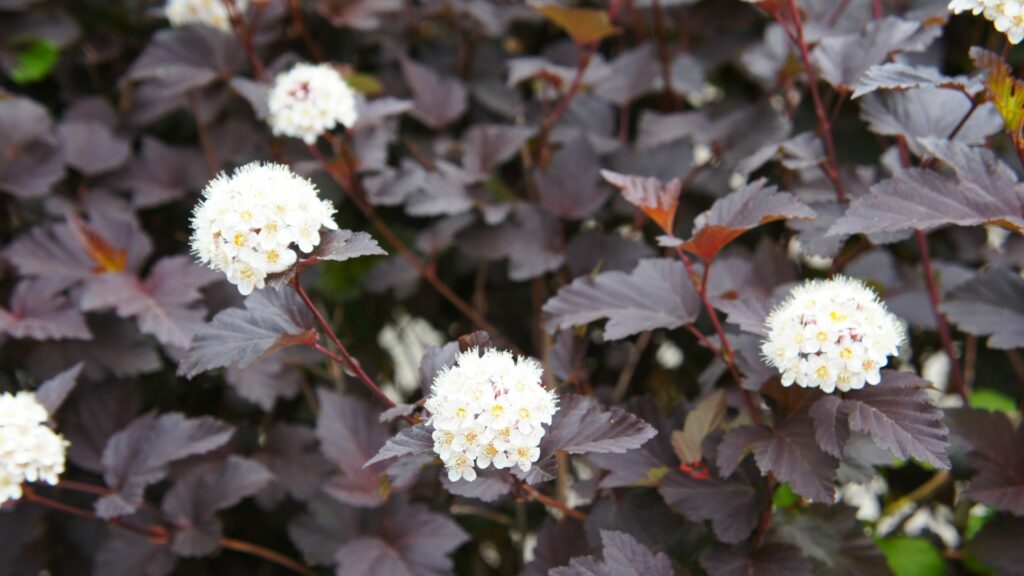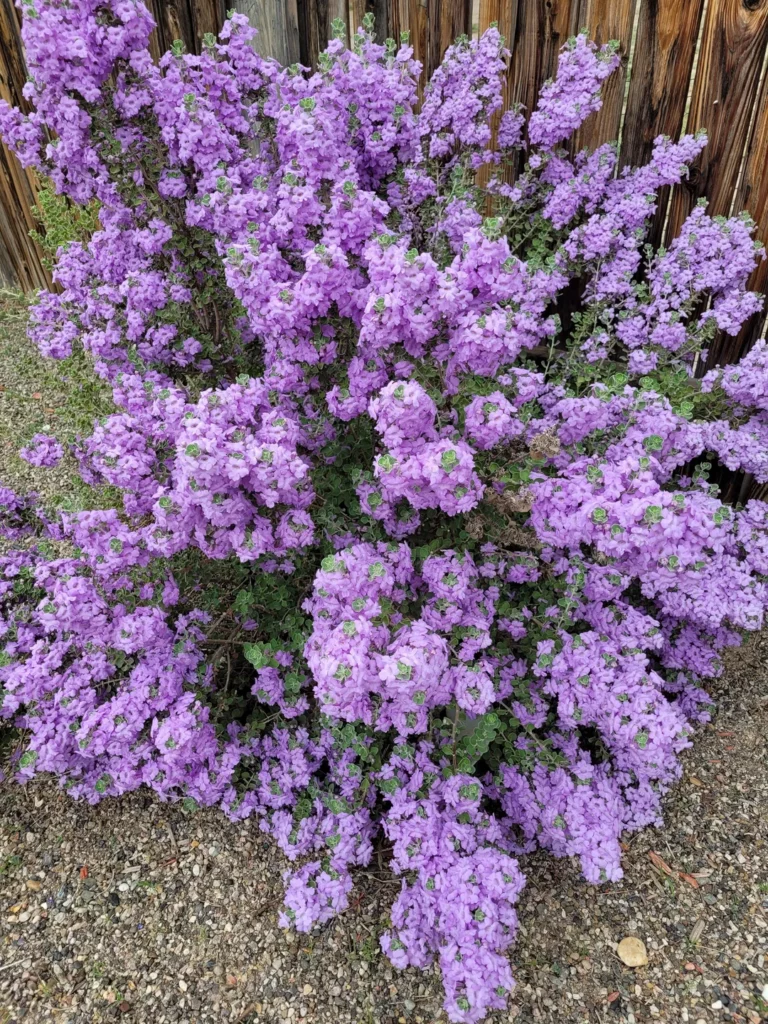If your yard feels a little flat, flowering shrubs are the secret sauce that can bring it to life—color, texture, fragrance, all in one tidy package.
I’ve always loved how the right blooms can turn an ordinary garden into something that feels truly magical. With so many options out there, though, it’s easy to get overwhelmed.
That’s why I’ve rounded up the best of the best—shrubs that don’t just survive, they shine. Get ready to meet the showstoppers your landscape has been waiting for.
1. Lilac
Lilacs are a staple in many gardens, celebrated for their enchanting fragrance and vibrant blooms. The flowers, typically purple, can also appear in shades of white, pink, and blue.
Their sweet scent is irresistible to humans and pollinators alike. Butterflies and bees flock to lilac bushes, ensuring your garden is a hub of activity.
Easy to grow, lilacs thrive in well-drained soil and full sun. Regular pruning helps them flourish, rewarding you with a floral spectacle each spring. Perfect as a standalone plant or in a hedgerow, they make any landscape sing!
2. Azalea
Azaleas are famous for their vibrant, eye-catching blossoms that range from white and pink to deep red. Each flower cluster creates a stunning display that turns any garden into a canvas of color.
Bees and hummingbirds are particularly fond of azaleas, drawn to their nectar-rich blooms. This makes them a lively addition to your garden.
They prefer partial shade and acidic soil, making them perfect for woodland gardens. With a little care, azaleas can transform your landscape into a breathtaking spectacle each spring.
3. Hydrangea
Hydrangeas boast large, showy flower heads that come in a variety of colors, from blues and pinks to whites and purples. Their blooms can change based on soil pH, adding an element of surprise each season.
These shrubs are adored by pollinators, especially bees, making them a great choice for eco-friendly gardens.
Hydrangeas thrive in rich, moist soils and can adapt to sunny or partially shaded spots. Their stunning floral displays last from spring to autumn, offering long-lasting beauty in your garden.
4. Rhododendron
Rhododendrons, with their lush, evergreen foliage and clusters of bell-shaped flowers, are a garden favorite. Their colors span from white to pink, red, and even yellow.
Birds and bees adore these shrubs, offering a vibrant source of nectar throughout their blooming season.
They thrive in acidic, well-drained soils with partial shade. Rhododendrons are particularly suited to woodland gardens and can make a stunning backdrop or centerpiece in any landscape.
5. Butterfly Bush
The butterfly bush is a true magnet for pollinators, living up to its name by attracting a myriad of butterflies with its sweet nectar. Its elongated flower spikes are a display of purples, pinks, and whites.
This shrub blooms from summer into fall, ensuring a long-lasting display of color and life.
It thrives in well-drained soils and full sun, making it an easy plant to grow. Regular deadheading promotes continuous blooming, keeping your garden alive with activity and color.
6. Camellia
Camellias are prized for their glossy, evergreen foliage and stunning, rose-like flowers that bloom in winter or early spring. Colors range from white and pink to deep reds.
These shrubs are a vital resource for early pollinators, providing nectar when few other plants are in bloom.
Camellias thrive in acidic, well-drained soils with partial shade. Perfect for shaded gardens or as a focal point, they bring elegance and life to any landscape.
7. Forsythia
This shrub dazzles with bright yellow flowers that announce the arrival of spring. Forsythia blooms even before its leaves appear, creating a striking contrast in the garden.
Bees and other pollinators flock to forsythia’s nectar-rich blooms, bringing energy and life to the space.
Thriving in full sun and well-drained soil, forsythia grows quickly and requires little care. Whether used for hedges or as a standalone plant, it adds a vibrant splash of sunshine to any landscape.
8. Magnolia
Magnolias are renowned for their large, fragrant blooms that appear in spring. Their flowers, in hues of white, pink, and purple, are a true spectacle.
These trees attract pollinators like bees and birds, offering an early source of nectar.
Magnolias thrive in rich, moist soils with full sun to partial shade. They make excellent focal points in gardens, with their grandeur and elegance transforming any landscape into a picturesque scene.
9. Spirea
Spirea is a versatile shrub, known for its cascading clusters of small white or pink flowers. Its blooms create a soft, fluffy appearance that’s perfect for borders or as a garden centerpiece.
In addition, bees and butterflies find spirea irresistible, flocking to its nectar-rich flowers.
It thrives in full sun and well-drained soil, requiring minimal maintenance. Moreover, with its long blooming period and easy-care nature, spirea is a delightful addition to any garden.
10. Weigela
Weigela is celebrated for its tubular flowers, which come in shades of pink, red, and white. Moreover, their blooms create a vibrant display that attracts both hummingbirds and bees.
This shrub’s long blooming period, from spring to autumn, ensures your garden remains colorful for months.
Weigela thrives in full sun and fertile, well-drained soil. Its easy-care nature makes it perfect for borders or as a standalone feature, bringing a lively touch to any landscape.
11. Rose of Sharon
The Rose of Sharon is a hardy shrub known for its large, hibiscus-like blooms that appear in late summer. Additionally, the flowers come in hues of white, pink, red, and purple.
This shrub is a favorite among bees and butterflies, as it provides nectar during the late blooming season.
It thrives in full sun and well-drained soil, requiring little maintenance. Whether used in hedges or as a standalone plant, the Rose of Sharon brings a tropical feel to any garden.
12. Viburnum
Viburnum is a diverse group of shrubs known for their fragrant, white flower clusters and vibrant fall foliage. Their blooms are a favorite among birds and pollinators.
These shrubs thrive in a variety of soil types and sunlight conditions, making them versatile additions to any garden.
With berries that attract birds and flowers that lure bees, viburnum ensures your landscape is always bustling with life. Their easy-care nature and year-round interest make them ideal for any garden setting.
13. Hibiscus
Hibiscus shrubs are known for their stunning, tropical-looking blooms that come in shades of red, pink, yellow, and white. Their large, vibrant flowers are a magnet for hummingbirds and butterflies.
These shrubs thrive in sunny locations with well-drained soil, blooming from summer into fall.
Hibiscus adds a touch of the tropics to any garden, with their bold colors and lush appearance. Regular watering and feeding will keep them blooming beautifully, creating a lively and exotic garden space.
14. Abelia
Abelia is a charming shrub with small, fragrant white or pink flowers that bloom from spring to fall. Their delicate blooms attract bees and butterflies, adding life to your garden.
This shrub thrives in full sun to partial shade, with well-drained soil. Moreover, its glossy, semi-evergreen foliage provides interest even when not in bloom.
Abelia’s long blooming period and easy-care nature make it perfect for borders or as a feature plant, ensuring your garden remains vibrant and lively throughout the seasons.
15. Gardenia
Gardenias are adored for their glossy foliage and intoxicatingly fragrant white flowers. Their blooms are a favorite among bees and other pollinators.
These shrubs prefer acidic, well-drained soils and thrive in partial shade, making them ideal for shaded gardens.
With regular feeding and watering, gardenias provide a lush, fragrant addition to your landscape. Their captivating scent and vibrant presence make them a must-have for any garden seeking elegance and charm.
16. Deutzia
Deutzia is loved for its profusion of small, star-shaped flowers that cover the shrub in late spring. These blooms come in white or pink, creating a delicate and charming display.
Additionally, pollinators, especially bees, are attracted to deutzia’s nectar-rich flowers, ensuring a lively garden.
This shrub thrives in full sun to partial shade and well-drained soil. Its low-maintenance nature and abundant blooms make deutzia an excellent choice for borders or as a garden feature.
17. Kerria
Kerria is a deciduous shrub known for its bright yellow, pom-pom shaped flowers that bloom in spring. These cheerful blooms bring a burst of sunshine to any garden.
Pollinators, including bees, are drawn to kerria’s vibrant flowers, adding life to your landscape.
This shrub thrives in partial shade to full sun and well-drained soil. Its easy-care nature and striking appearance make kerria a charming addition to borders or as a standalone feature.
18. Fothergilla
Fothergilla is cherished for its white, bottlebrush-like flowers and vibrant, colorful foliage in the fall. Moreover, its blooms provide a source of nectar for early pollinators.
These shrubs thrive in well-drained, acidic soils and prefer full sun to partial shade. As a result, their unique appearance and seasonal interest make them a versatile addition to gardens.
Fothergilla’s fragrant flowers and stunning autumn colors ensure your garden remains captivating throughout the year, attracting both pollinators and admiration.
19. Clethra
Clethra, also known as summersweet, is prized for its fragrant, white flower spikes that bloom in mid to late summer. These blooms attract bees and butterflies, creating a lively garden environment.
Furthermore, the shrub thrives in moist, well-drained soils and can grow in full sun to partial shade, making it versatile for various garden settings.
Overall, clethra’s aromatic flowers and glossy foliage make it a fantastic addition to any garden, offering beauty and attracting pollinators when few other plants are in bloom.
20. Smoke Bush
Smoke bush is known for its unique, airy flower plumes that resemble puffs of smoke and its striking purple foliage. These features create a dramatic and unusual display in any garden.
The flowers attract bees and other pollinators, adding to the shrub’s appeal.
This shrub thrives in well-drained soil and full sun, requiring minimal care. Its distinctive appearance and vibrant colors make smoke bush a captivating focal point or backdrop in your landscape.
21. Mock Orange
Mock orange is adored for its white, citrus-scented flowers that bloom in late spring. Its fragrant blooms are a hit with both pollinators and garden enthusiasts.
The shrub prefers well-drained soil and full sun to partial shade, making it versatile for different garden settings.
Mock orange’s intoxicating fragrance and lush, green foliage make it a delightful addition to any garden, bringing a touch of elegance and charm to the landscape.
22. Nandina
Nandina, or heavenly bamboo, is prized for its white flowers, red berries, and vibrant foliage. Its berries attract birds and bees enjoy its blooms.
This shrub thrives in full sun to partial shade and well-drained soil. Its colorful foliage and year-round interest make it a versatile garden choice.
With minimal care, nandina adds texture, color, and wildlife interest to your landscape, ensuring a dynamic and beautiful garden all year.
23. Oleander
Oleander is known for its long-lasting, colorful blooms that come in shades of pink, red, white, and yellow. Its flowers attract pollinators, adding movement to the garden.
The shrub thrives in full sun and well-drained soil, tolerating heat and drought conditions.
Oleander’s easy-care nature and vibrant flowers make it a popular choice for gardens needing a splash of color and resilience. But be careful, since all parts of oleander are toxic if ingested.
24. Rosemary
Rosemary is not only a culinary herb but also a lovely flowering shrub with blue flowers that attract bees and butterflies.
Moreover, the shrub thrives in full sun and well-drained soil, making it perfect for herb gardens or borders.
In addition to its beauty, rosemary’s fragrant foliage and delicate blooms bring both visual and aromatic delight to gardens. It’s an excellent choice for gardeners looking to combine beauty with utility, as its leaves can also be used in cooking.
25. Crape Myrtle
Crape myrtle is celebrated for its long-lasting summer blooms in shades of pink, red, white, and purple. Its flowers and smooth, peeling bark make it a standout in any garden.
Pollinators, especially bees, are drawn to its vibrant flowers, ensuring a lively garden scene.
The tree thrives in well-drained soil and full sun, requiring minimal care. Its stunning blooms and distinctive bark provide year-round interest, making crape myrtle a popular choice for gardeners seeking low-maintenance beauty.
26. Honeysuckle
This one is a vigorous vine known for its sweetly scented, tubular flowers that attract hummingbirds and butterflies.
The plant thrives in well-drained soil and full sun to partial shade, making it versatile for various garden settings.
Honeysuckle’s fragrant blooms and climbing nature add vertical interest and charm to gardens. Perfect for trellises or fences, this vine brings a touch of romance and wildlife to any landscape.
27. Pieris
Pieris, also known as andromeda, features white, bell-shaped flowers that bloom in early spring. Additionally, its new growth appears red, adding year-round interest.
As a bonus, pollinators—especially bees—are attracted to its early blooms, making it a valuable garden plant.
When it comes to growing conditions, the shrub thrives in acidic, well-drained soils and prefers partial shade. Altogether, its elegant flowers and evergreen foliage make pieris a standout feature in shaded garden areas.
28. Mountain Laurel
Mountain laurel is a stunning evergreen shrub with clusters of intricate, cup-shaped flowers in shades of white, pink, and deep rose. Its blooms appear in late spring to early summer, adding a touch of elegance to any landscape.
Moreover, bees and other pollinators flock to its nectar-rich blossoms, ensuring plenty of activity in your garden. Thriving in acidic, well-drained soil with partial shade, this shrub is a standout in woodland gardens.
With its glossy leaves and striking flowers, mountain laurel brings year-round beauty to the landscape.
29. Beautyberry
Beautyberry earns its name with vibrant purple berries that persist through fall and winter. Before that, delicate clusters of pink or lavender flowers bloom in summer, attracting pollinators like bees and butterflies.
In terms of growing conditions, this hardy shrub thrives in well-drained soil and full sun to partial shade. While the flowers are lovely, the real show begins when the berries form, creating a striking contrast against its green foliage.
All in all, beautyberry is an excellent choice for adding color and winter interest to your landscape while also providing a food source for birds.
30. Witch Hazel
This is a unique shrub that blooms in the late fall or winter, just when most gardens are winding down. Meanwhile, its spidery yellow, orange, or red flowers provide unexpected bursts of color during the colder months.
In addition, pollinators appreciate its rare off-season nectar, especially early-emerging bees on warm winter days.
As for care, witch hazel thrives in well-drained, slightly acidic soil and prefers full sun to partial shade. Plus, its low-maintenance nature and medicinal history make it both a functional and beautiful addition to the landscape.
31. Ninebark
Ninebark stands out with its peeling bark, colorful foliage, and clusters of white or pink flowers that appear in late spring. Additionally, it offers multi-season interest, with its textured bark adding winter appeal.
Pollinators, like bees, are drawn to its blooms, while birds enjoy the seed capsules that follow.
This hardy shrub tolerates a wide range of conditions, thriving in full sun to partial shade and various soil types. As a result, its durability and visual interest make ninebark a perfect choice for borders, hedges, or erosion control.
32. Texas Sage
Texas Sage, also known as Leucophyllum frutescens or barometer bush, is a drought-tolerant shrub celebrated for its silvery-gray foliage and bursts of lavender to purple flowers. These blooms often appear after rain, creating a striking contrast against its soft, dusty leaves.
Pollinators such as bees and butterflies are drawn to its nectar-rich flowers, making it an excellent choice for eco-conscious gardeners in dry regions.
This hardy shrub thrives in full sun and well-drained, sandy soils, requiring minimal water and maintenance once established. Ideal for xeriscaping or low-water landscapes, Texas Sage adds year-round texture and seasonal color to your garden, singing beautifully even in arid conditions.

